Flying for the first time? Air travel is increasingly common for journeys of hundreds or even thousands of miles. However, first-time flyers often feel anxious about navigating the seemingly complex airport procedures. This guide by KK2Trip outlines essential preparations and tips for a smooth and safe flight.
Preparing for Your Flight
Flight Tickets
You can book flights directly with airlines or through travel agencies. Booking early often secures better deals.
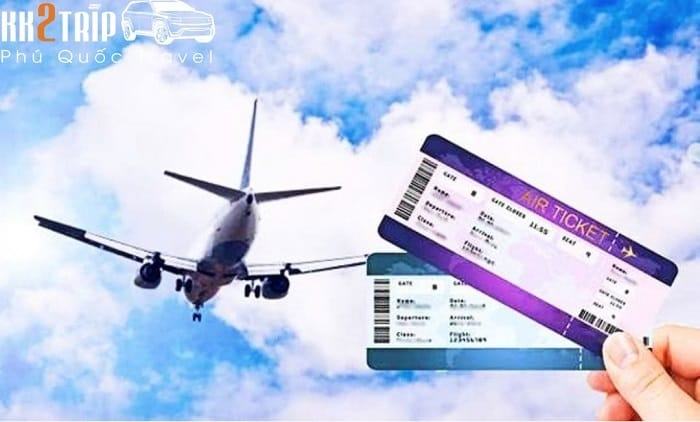
Look out for promotional deals, including heavily discounted or even free flights from reputable airlines. However, these often have restrictions such as advanced booking requirements, limited baggage allowance, and non-refundable policies.
Important Documents
Ensuring you have the correct documentation is crucial for a hassle-free journey. Remember to bring:
- National ID card or Citizen Identity Card for domestic flights, and a valid passport for international flights.
- Visa for international travel (not required for flights from Vietnam to most Southeast Asian countries).
- Cash for airport taxes.
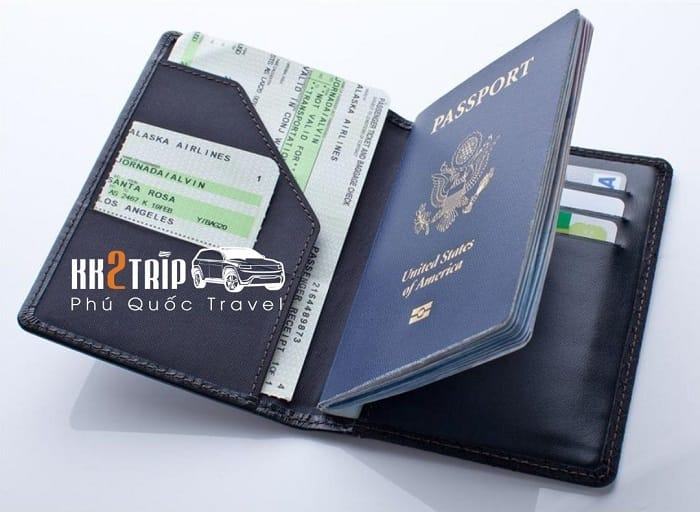
Luggage
First-time flyers should note:
- Prohibited items include sharp objects like knives and scissors, explosives, and flammable materials. Airlines have specific regulations; review these when booking your ticket.
- There are two types of luggage allowed on flights:
- Carry-on Luggage: This is kept with you in the cabin, either in the overhead compartment or under the seat in front of you. Generally, carry-on luggage should not exceed 7kg and dimensions of 56cm x 36cm x 23cm. However, some airlines, like Vietnam Airlines, allow up to 12kg. Always check your ticket for specific airline regulations.
- Checked Luggage: This is heavier, bulkier luggage checked in at the check-in counter and stored in the aircraft’s hold. The weight allowance depends on the airline’s policy and any additional baggage purchased with your ticket.
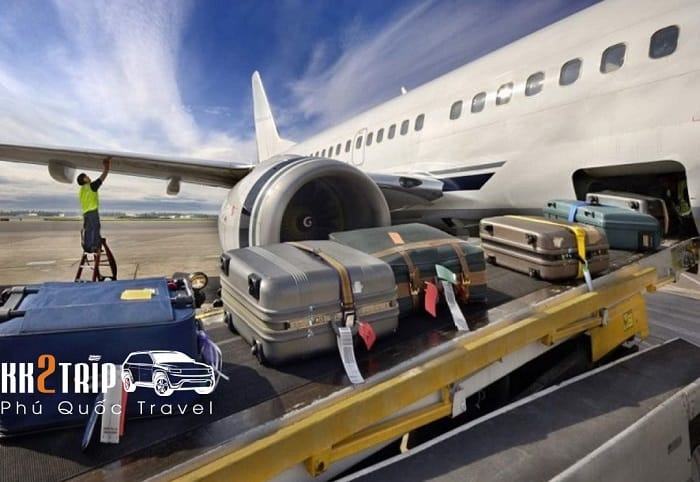
Airport Arrival Time
Arrive at the airport well in advance to allow ample time for check-in and unforeseen delays:
- Domestic Flights: Arrive at least 2 hours before departure.
- International Flights: Arrive at least 3 hours before departure.
Airport Procedures
Check-In
Proceed to your airline’s check-in counter upon arrival. Check-in typically opens 3 hours before departure. Early check-in allows for better seat selection (if not pre-assigned) and avoids potential queues.
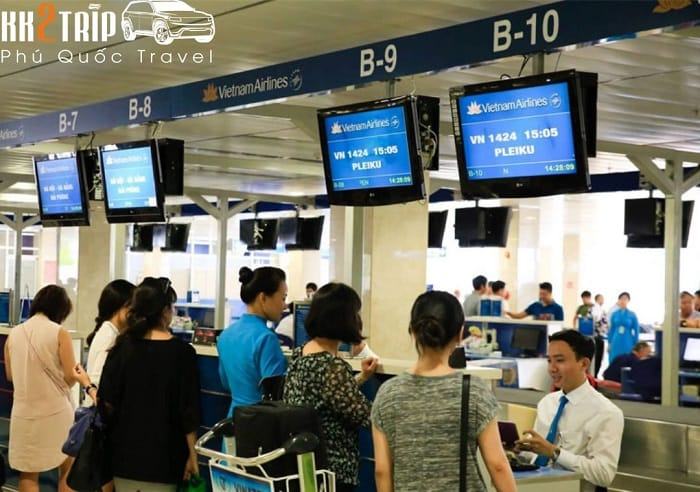
Business and First Class passengers have dedicated check-in counters. If queues are long, airport staff may utilise priority counters to expedite the process for all passengers. Have your ID card, passport, and visa readily available. Check your carry-on and checked luggage weight beforehand. Your boarding pass will indicate your gate number, departure time, and seat assignment. For connecting flights, staff may issue boarding passes for subsequent legs.
Immigration (International Flights)
International flights require immigration procedures. Security checks may vary between airports and may take place before or after immigration. Present your passport and visa to immigration officers for verification and stamping. Domestic flights do not require this process.
Security Check
Place personal items like keys, phones, belts, bags, watches, and shoes in trays for X-ray scanning. You will pass through a metal detector.
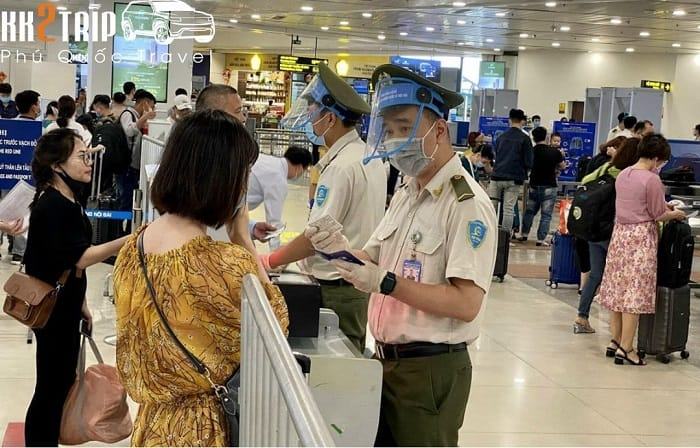
Security checks are quick and straightforward if you follow instructions and avoid carrying prohibited items.
After Check-In
Boarding
Airport staff will announce boarding time, verify boarding passes, and direct passengers to the aircraft. Priority boarding is usually given to Business Class passengers, those with disabilities, and those travelling with young children. Other passengers board in sequence. You may walk directly to the aircraft via a jet bridge or be transported by bus.
During Take-Off
Key points to remember:
- Fasten your seatbelt during take-off, landing, and turbulence. Electronic devices must be switched off during these periods for safety.
- Airlines have specific in-flight regulations which will be announced before take-off.
Disembarking and Beyond
Leaving the Aircraft
Passengers disembark in sequence, usually through one or both aircraft doors. Follow airport signage and instructions for designated exits. For domestic flights, collect your luggage and proceed to the exit. For international connecting flights with a separate transit point requiring a different visa:
Example: A flight from Hanoi to Amsterdam transiting in Singapore (HANOI – SINGAPORE – AMSTERDAM).

If you have a boarding pass for the connecting flight (SIN – AMS), proceed to the lounge or check the flight information display. If you do not have a boarding pass, visit the Transfer Desk for assistance with check-in for your connecting flight. For international connecting flights where the transit and final destination are within the same visa zone:
Example: Hanoi to New York (USA), transiting in Los Angeles (USA): HANOI – LOS ANGELES – NEW YORK. You must complete immigration procedures in Los Angeles before continuing to your final destination.
Luggage Collection
Checked luggage is delivered to designated baggage carousels. Check the electronic display to identify the carousel corresponding to your flight. Report missing luggage to the airline immediately. If you have no checked luggage, proceed directly to the exit.
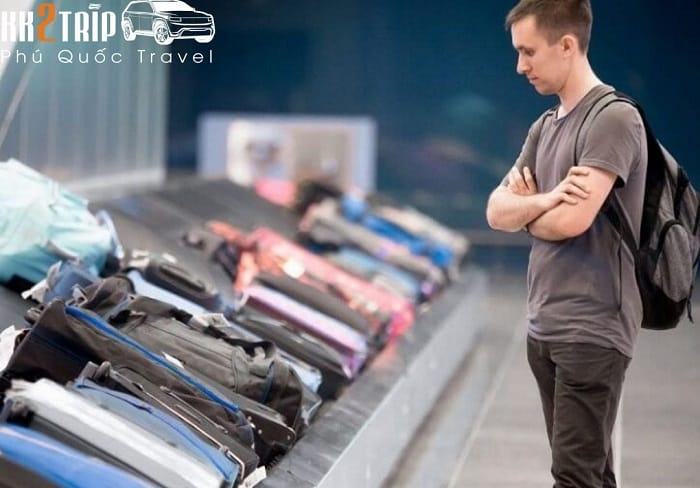
This guide provides essential information for first-time flyers. We hope it ensures a safe and enjoyable journey. For airport transfers in Phu Quoc, contact KK2TRIP’s reliable taxi service. We guarantee excellent service. Contact us:
- Address: 118 Tran Hung Dao Street, Phu Quoc
- Phone: 0816667118
- Website: https://kk2trip.com/


 Tiếng Việt
Tiếng Việt